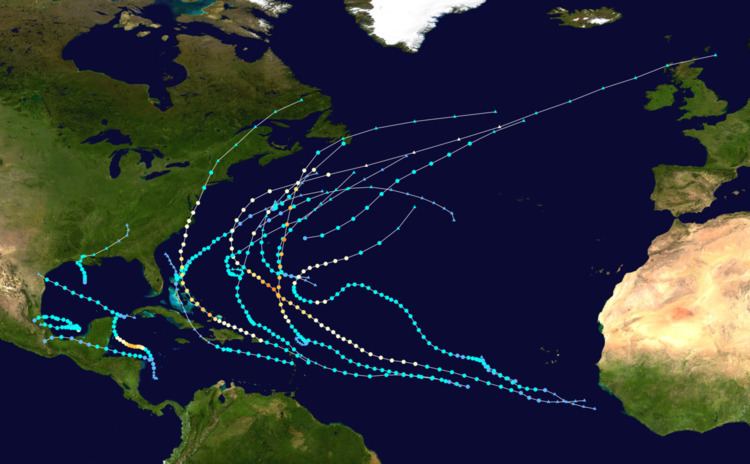 | ||
The 2011 Atlantic hurricane season was well above average in the number of tropical cyclones that formed, at nineteen. It was also the first time that the first eight tropical cyclones of the season failed to attain hurricane status. Although Tropical Storm Arlene formed on June 28, the season officially began on June 1 and ended on November 30, dates that conventionally delimit the period of each year when most tropical cyclones develop in the Atlantic basin. The season's final storm, Tropical Storm Sean, dissipated on November 11.
Contents
The season produced twenty tropical depressions, of which nineteen further intensified into tropical storms; seven strengthened hurricanes, and four hurricanes ultimately intensified into major hurricanes. This makes 2011 the third most active hurricane season on record, along with 1887, 1995, and 2010. The two most significant storms, in terms of loss of life and damage, were Hurricane Irene and Tropical Storm Lee. Hurricane Irene was a powerful and unusually large storm that made several landfalls along the East Coast of the United States after peaking with maximum sustained winds of 120 mph (195 km/h). Tropical Storm Lee was a disorganized tropical cyclone that moved ashore the coastline of Louisiana before producing historic flooding in the Northeast United States as an extratropical cyclone.
This timeline includes information that was not operationally released, meaning that data from post-storm reviews by the National Hurricane Center, such as a storm that was not operationally warned upon, has been included. This timeline documents tropical cyclone formations, strengthening, weakening, landfalls, extratropical transitions, and dissipations during the season.
